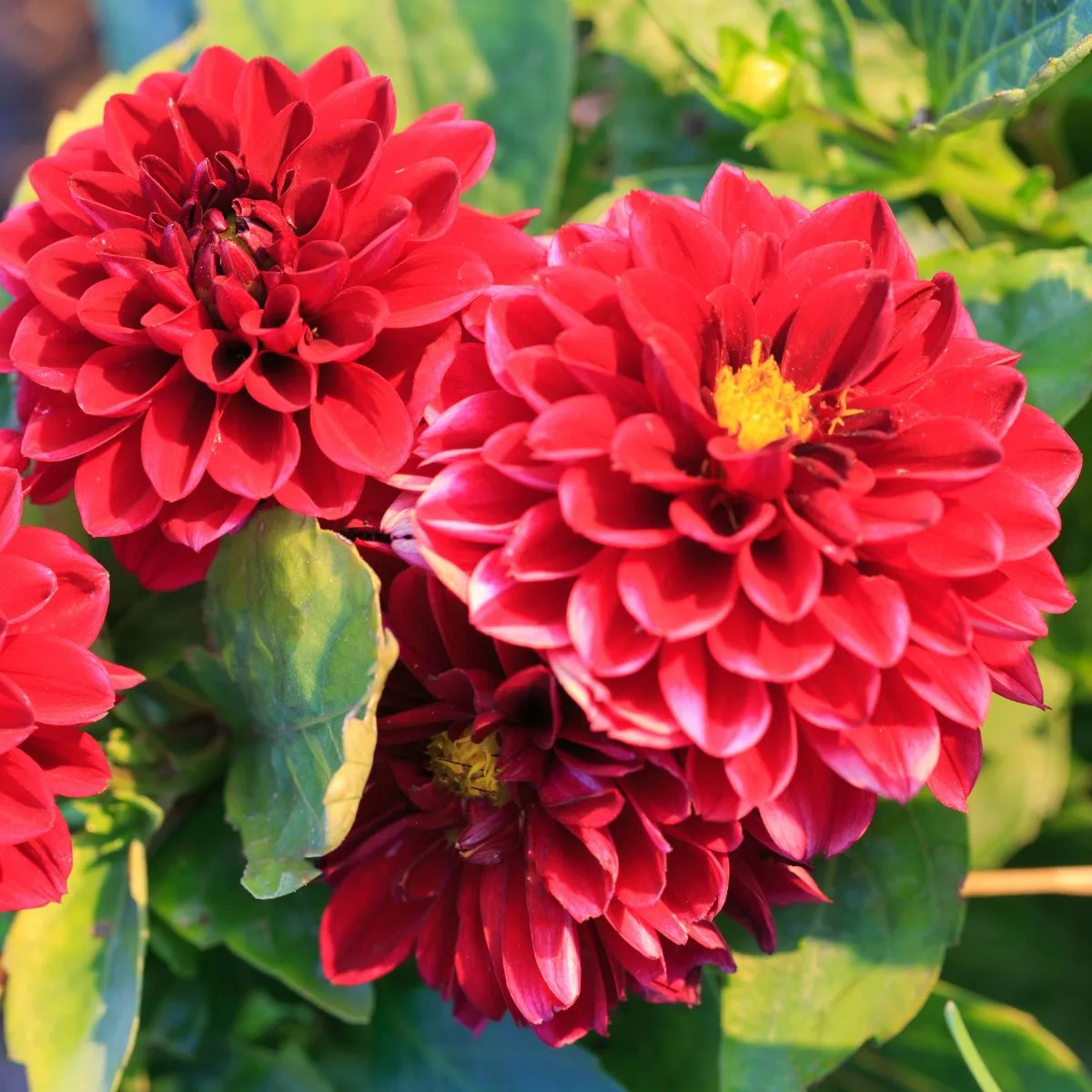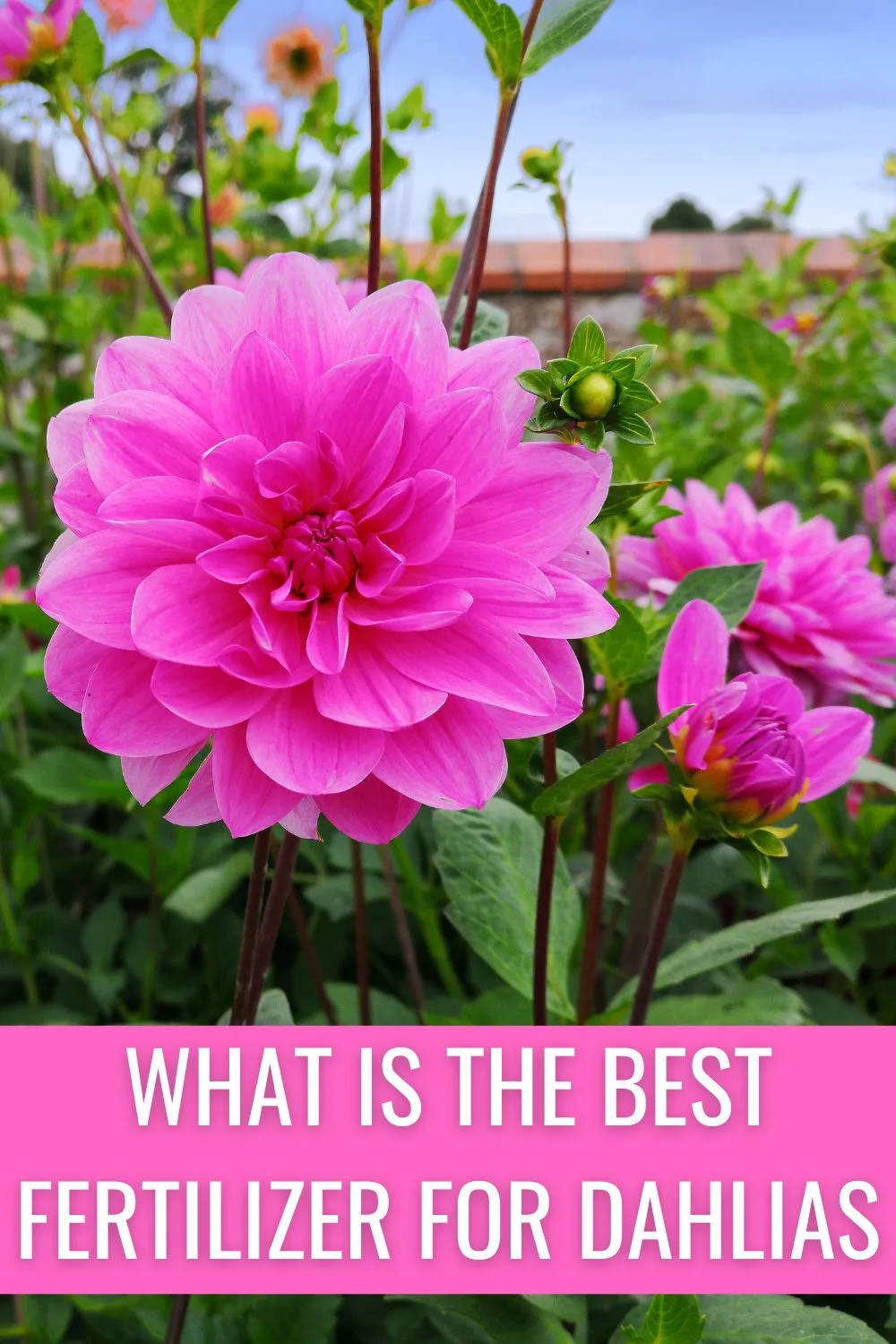Everybody loves dahlias! With their colorful petals and unique shapes, dahlia flowers come in a variety of shades, such as red, pink, yellow, orange, and purple. But to grow these gorgeous flowers, you must use a good fertilizer and apply it at the right time. So, what is the best fertilizer for dahlias?

What Is The Best Fertilizer For Dahlias?
A low-nitrogen fertilizer is your best bet to promote healthy growth and abundant dahlia blooms. While various options are available, I suggest using a balanced fertilizer with a ratio of 5-10-10 or 10-20-20. You can also use processed cow manure, a rich nutrient source for dahlias. It’s important to note that dahlias require a low-nitrogen fertilizer, as too much nitrogen can result in lush foliage but fewer blooms. For best results, apply the fertilizer every 4-6 weeks during the growing season and water the plants regularly to ensure proper nutrient absorption.
These beautiful flowers, native to Mexico and Central America, prefer well-draining, sandy soil with a pH of 6.5 to 7, and a sunny spot with some afternoon shade. So, if you have alkaline soil, you might need to add some lime to it to lower the pH level.
The best dahlia fertilizer is one with only a little nitrogen. When shopping for fertilizers, you’ll notice that they all have an NPK ratio on the front.
What is the NPK ratio?
This ratio stands for nitrogen (N), phosphorus (P), and potassium, or potash (K), the three macronutrients that all plants need to survive.
Nitrogen keeps the plant’s leaves healthy. Any plant, including dahlias, needs nitrogen for healthy foliage, buds, and flowers. If your dahlia plants have little foliage and the leaves are small or weak, you might need to add more nitrogen to the soil.
Phosphorus ensures that the plant’s roots and stems are healthy. Fertilizers often contain higher amounts of phosphorus than other minerals because, without phosphorus, your plant cannot absorb nutrients and water from the soil. Your dahlias will look dull, weak, and dehydrated if there isn’t enough phosphorus in the soil.
Potassium, or potash, takes care of your plant’s general health. Potassium makes the plant more resistant to pests and diseases. If the dahlias in your garden are diseased (powdery mildew, bacterial wilt, botrytis, etc.), or attacked by pests, such as spider mites, aphids, mealybugs, or thrips, give them a little extra potassium to keep them strong and healthy.
For dahlias, you should look for a fertilizer with less nitrogen than phosphorus and potassium. Although nitrogen is essential for foliage, having too much nitrogen in your fertilizer can cause dahlia plants to produce too much foliage with little to no flowers.
The best dahlia fertilizer has an NPK ratio of 5:10:10 or 4:8:8. Any fertilizer with half as much nitrogen as phosphorus and potassium is ideal for dahlias.
With so many fertilizers available, you may come across organic, inorganic, synthetic, or chemical fertilizers. Which one is best?

Organic vs. chemical fertilizers
Whenever possible, organic fertilizer is best. It will have organic components, including microorganisms, that improve soil quality and plant health. In addition, organic fertilizers are much better for your soil because they replace some of the nutrients flushed out of the soil and help prevent soil erosion.
On the contrary, chemical fertilizers don’t replace any lost nutrients in the soil. They are often more concentrated than organic fertilizers and may show a quicker result than organic fertilizers. However, chemical fertilizers don’t benefit the soil and may cause salt buildup.
So, if chemical fertilizers are used, alternate between different brands to reduce salt buildup. Also, use caution when fertilizing your dahlias with chemical fertilizer: sprinkling a strong fertilizer at the base of the plants may burn the roots and stems.
Quick-release vs. slow-release fertilizers
Another consideration when shopping for fertilizers is choosing between a slow-release or quick-release fertilizer.
Slow-release fertilizers are often more concentrated, and you only have to use them once in a while, as the fertilizer remains in the soil for much longer. Every time you water the plants, the fertilizer starts breaking down and is then absorbed by the soil and the dahlia’s roots.
Quick-release fertilizers often come in liquid form. The roots absorb these fertilizers soon after you apply them, and they don’t stay in the soil as long. Because of this and the fact that they aren’t as concentrated as slow-release fertilizers, you must apply quick-release fertilizers more often.
Dahlias don’t have a preference between slow-release and quick-release fertilizers, so the choice is yours.
The best fertilizer brands for dahlias
Now that you know the different types of fertilizers you can find for dahlias, let’s consider some of the best fertilizers available. You’ll ultimately look for a flower or vegetable fertilizer that promotes flower growth and has a low nitrogen content. Here are some of the best fertilizers available for dahlias:
- JR Peters Jack’s Classic Blossom Booster (10:30:20)
- Grow More Hawaiian Bud and Bloom (5:50:17)
- Earth Organic Bud and Bloom Booster (3:9:4)
At planting time, after the last danger of frost, give dahlias some plant food to jump-start growth. For proper soil preparation before planting dahlia flowers, add bone meal, alfalfa meal, and/or compost to the planting hole to ensure the soil quality is ideal.
When Should You Fertilize Dahlias?
After choosing the best fertilizer for your dahlias, you should also know when and how to add fertilizer to your plants. Dahlias are mostly annual flowers. However, you can overwinter them in warmer climates. Generally, we recommend planting your dahlias as soon as the frost clears. This will ensure that they bloom early and have a longer blooming period.
When planting your dahlia tubers, add some bone meal to the soil to give the tubers a nice boost. Only fertilize them thirty days after planting to avoid burning the stems and roots. Then, you can fertilize your dahlias every thirty days while in their blooming phase. Your fertilizer package will also indicate how often to fertilize and how much fertilizer to use.
If your plant looks a little under the weather, add more fertilizer to the soil. However, if the leaves or stems turn yellow after fertilizing, the fertilizer is too strong, burning the roots. In this case, switch to different fertilizer and wait longer before fertilizing again.
FAQs
How do I know my dahlias need fertilizer?
Yellow leaves, lack of new growth, and small pale flowers indicate a need for nitrogen. Dull foliage, falling leaves, and weak flower buds may indicate a need for phosphorus. And weak stems, poor buds, yellow edges on leaves, or brown leaves could suggest a need for potassium.
How to apply fertilizer?
Apply granular fertilizer, powders, or organic manure around the base of the plants, lifting leaves to reach the base. Apply water-based products like foliar feed straight to the leaves for easy absorption, and place slow-release pellets or spikes near the main stem to reach feeder roots.
How can I increase my dahlia’s blooms?
To ensure big, beautiful dahlia blooms, plant them in full sun and pinch out the center stalk when just a few inches tall: this will make bushier plants (they might need a wooden stake or some other type of support) and increase flower production. Also, remember to prune old blooms to promote new growth and more flowers. And don’t forget to fertilize them.
Dahlias are easy to grow and will give you lots of gorgeous blooms from early summer through late fall. Enjoy a dahlia garden in your front yard (check out these dahlia companion plants), or use them as cut flowers to make bouquets for yourself or a friend.

Adriana Copaceanu is a passionate nature lover living in the country on her dream property where she grows vegetables, lavender, and wildflowers that she shares with the wildlife they attract. When she's not in the garden, she loves spending time with her chickens and planning her next nature project. Check out her books below:
How to Grow Lavender for Fun and Profit: Lessons Learned from Planting Three Hundred Lavender Plants


How To Grow Dahlias For Gorgeous Colors In The Garden
Friday 5th of May 2023
[…] Dahlias (Dahlia pinnata) rule in the late summer flower garden and continue blooming until the first frost of fall, especially if you use the right dahlia fertilizer. […]
6 Great Companion Plants For Dahlias
Friday 5th of May 2023
[…] Learn more about growing dahlias, including how and when to fertilize dahlia plants. […]